Best
Flute For
Beginner
JFL700REC PERFECT FLUTE FOR A STRONG START
-
Overall: With Genesis head joint.
-
Best Feature: Upgraded mouthpiece with a wide riser angle.
-
TedScore™: 8/10
Best
Overall Flute
-
Overall: Design based on Yamaha's Professional Series flutes
-
Best Feature: Nickel silver construction provides increased durability.
-
TedScore™: 9/10
Best
Budget-friendly
Flute
INTRODUCTION
-
Overall:
Closed-hole flute - easier for beginner. -
Best Feature: Nickel Silver Body.
-
TedScore™: 8/10
When I first picked up the flute, I was fascinated by the question of how many notes does a flute have.
The flute is one of those magical instruments that can charm anyone with its sound as it dances through a spectrum of notes, from the middle C to those higher octaves. Though the range may vary with different types of flutes, its ability to produce beautiful music is indisputable.
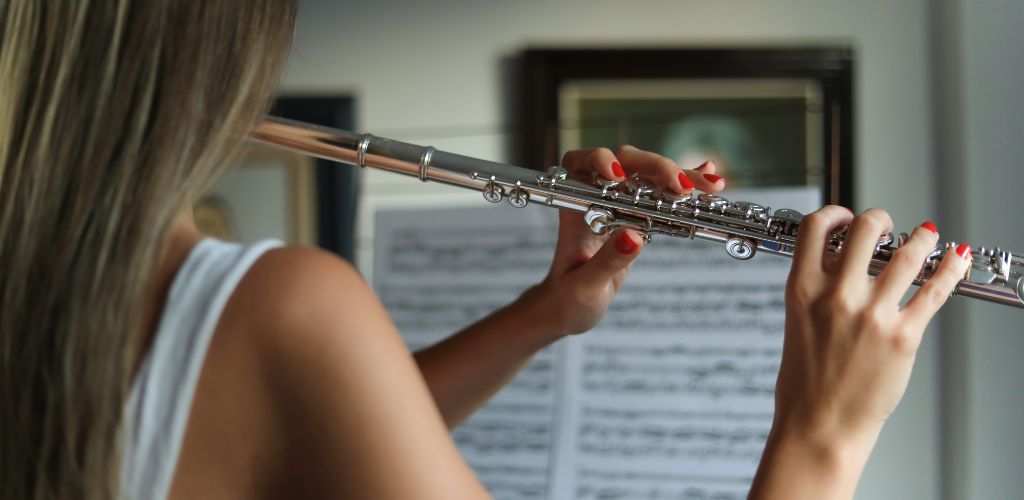
The standard C flute, a staple in orchestras, can produce around 36 to 38 notes depending on whether it has a B foot joint. Each type of flute, from the piccolo to the contrabass, has its unique range, contributing to diverse soundscapes in music.
In this blog post, I will uncover the secrets behind the range of different flutes and highlight what makes each type unique.
Let’s explore the world of flute notes deeper and discover their nuances together!
Understanding the Flute's Range and Keys
When exploring the flute, I find it fascinating to consider its impressive range and the role of its keys. With its ability to span three full octaves, each part of the flute contributes uniquely to its sound, from the basic structure to the specific function of the foot joint.
The Basic Structure of the Flute

The concert flute is a brilliant example of musical engineering. Often made of metal or wood, it has various key openings that allow it to produce sound through vibrational changes as I blow air across the mouthpiece.
With about 16 to 20 key openings, the standard C flute is designed to cover a chromatic scale across three octaves. This well-thought-out structure lets me use the keys to expertly navigate between notes, allowing for a wide variety of musical expressions.
Range of Notes and Octaves
As I play, I’m always amazed by the flute’s range, which generally spans from C4 to C7.

This range allows me to explore everything from deep, resonant, low-register notes to the dazzling highs of the third octave. It’s not just about reaching notes; it’s about the ability to switch between registers seamlessly, giving life to music across genres.
The low register brings a warm, rich sound, while the middle and high registers introduce bright, piercing tones. As these registers unfold, they transform the musical landscape with each breath I take.
The Role of the Foot Joint in Range Extension
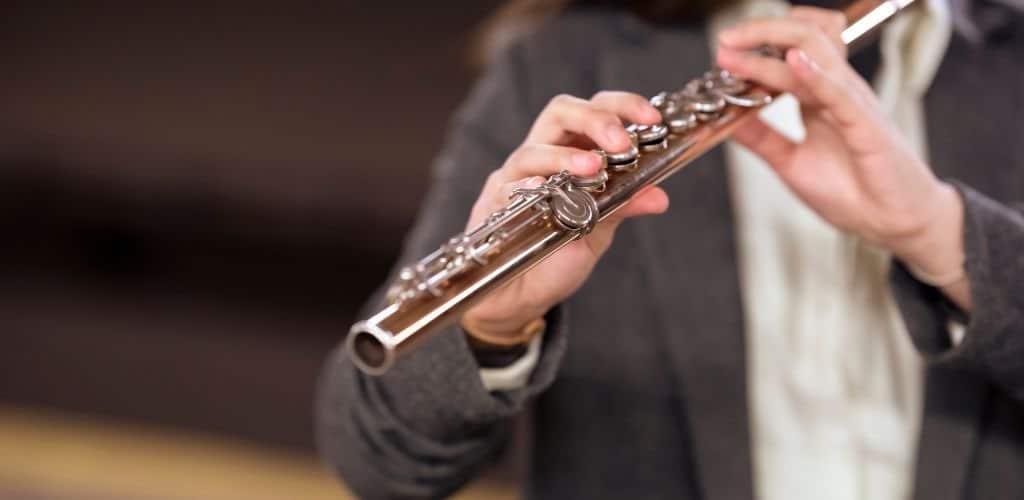
The foot joint holds a special place in extending the flute’s range. Among various foot joints, the B foot joint stands out for enabling the flute to reach a lower B note, just below Middle C.
Adding this extension deepens the instrument’s range and enriches its repertoire of tones. By including this joint, the flute gains an additional semitone, making it possible to explore musical pieces that demand a wider range. This small yet powerful component enhances the flute’s versatility, allowing me to delve into more complex compositions with ease.
Advanced Techniques and Variations
Exploring advanced techniques on the flute includes mastering intricate fingerings and leveraging alternate fingerings for enhanced tonal range. Understanding the nuances of different flute types, such as the piccolo and bass flute, enriches a flutist’s skills and broadens their expressive capabilities.
Extended Techniques and Artistry

Extended techniques bring a new dimension of expressiveness to flute playing. Techniques like multiphonics, harmonics, and flutter-tonguing expand the sonic possibilities. They require precise control of embouchure and breath.
For instance, the use of harmonics on the flute can create varied tonal colors. Mastering these techniques not only enhances artistry but also pushes the boundaries of traditional flute performance.
These techniques can be challenging, yet they offer an exciting avenue for artistic growth.
Understanding Fingering Charts and Alternate Fingerings

Flute fingering charts are essential tools for learning the instrument. They guide flutists through standard and alternate fingerings to achieve different pitches, including sharps and flats.
Sometimes, alternate fingerings are necessary for smoother transitions in chromatic passages. They allow flutists to maintain fluidity and control, especially in complex or rapid sequences.
Using a fingering chart strategically can significantly enhance a flutist’s technique and playability.
Different Types of Flutes and Their Characteristics

Different flutes, such as the piccolo, alto, and bass flute, each have unique characteristics. The piccolo is smaller and plays at a higher register, often adding brilliance to soundscapes.
The alto flute, with its deeper tone, offers a rich sound palette, while the bass flute adds a lower, resonant sonority. Understanding the nuances of each type aids in selecting the right instrument for specific musical contexts.
These variations contribute to the chromatic versatility required in diverse musical landscapes.
Popular Brands and Models
Yamaha YFL-222 Student Flute with Offset G Key System

DESIGNED FOR: Beginners
FEATURES: The design is based on Yamaha's Professional Series flutes.
OTHER INFO: Nickel silver construction provides increased durability and a rich tone.
Yamaha YFL-222 Student Flute with Offset G Key System
- Hand-assembled silver-plated keys.
- Comfortable offset G key system.
- Includes case.
- While some players find the offset G key comfortable, others may prefer an inline G key system, so it's a matter of personal preference.
When you click ‘Check Price’, you’ll see there are loads of great places to buy this item. Our personal favorite is Sweetwater for the US, and Thomann and Gear4Music for the UK & Europe.
They are the largest music retailers, with excellent customer service, competitive prices, really fast shipping, and the longest guarantees.
The professional musician who wrote this article combined many things,
from the product build, manufacturer’s reputation through to feedback
from other users, to create our famous TedScore™.
Stagg FL111 Flute
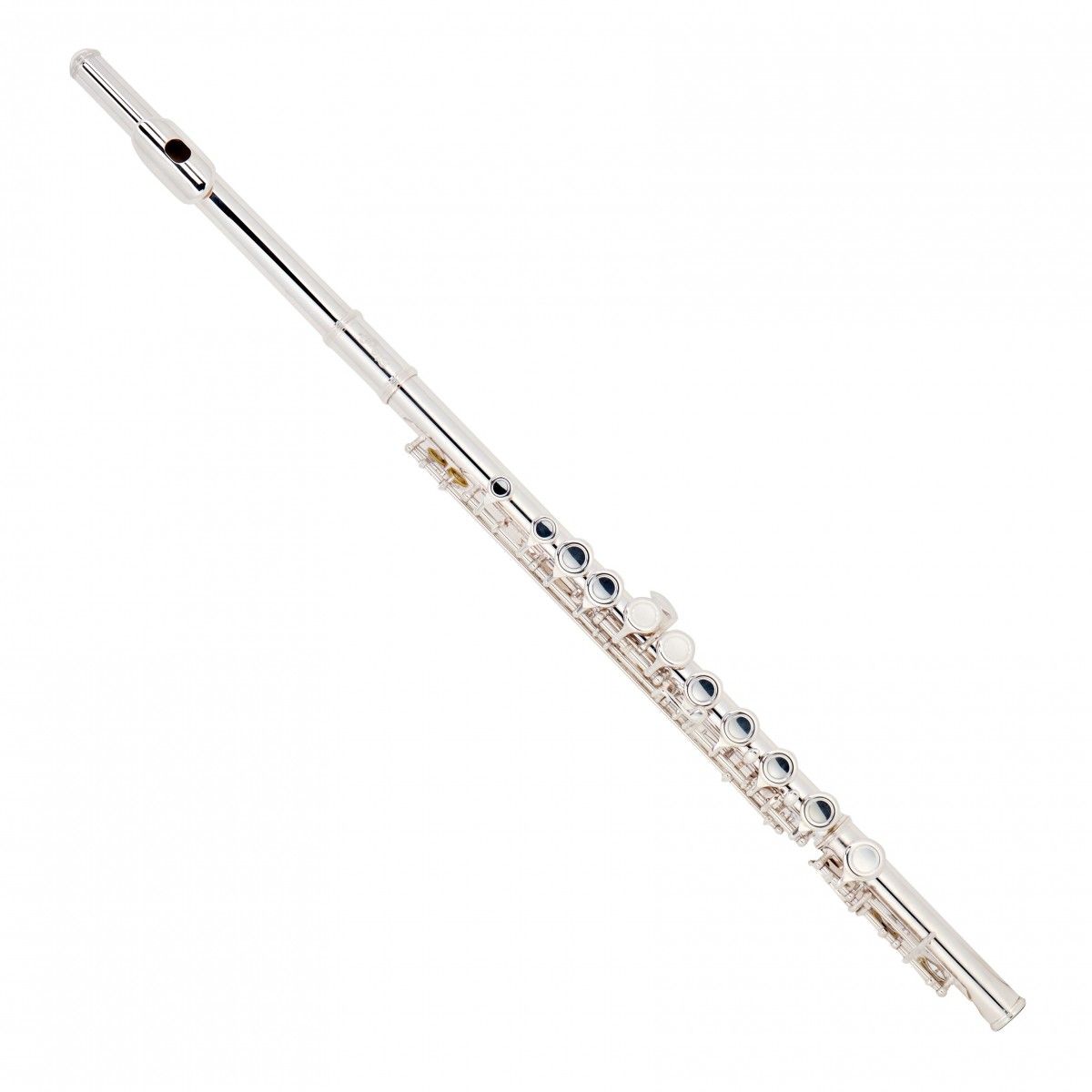
FEATURES: Closed-hole flute - easier for beginner
OTHER INFO: Nickel Silver Body
- Cost-effective
- Offset G for extra ergonomic design
- It may not be as durable as advanced flute
When you click ‘Check Price’, you’ll see there are loads of great places to buy this item. Our personal favorite is Sweetwater for the US, and Thomann and Gear4Music for the UK & Europe.
They are the largest music retailers, with excellent customer service, competitive prices, really fast shipping, and the longest guarantees.
The professional musician who wrote this article combined many things,
from the product build, manufacturer’s reputation through to feedback
from other users, to create our famous TedScore™.
Jupiter JFL700REC Flute

FEATURES: With Genesis head joint
OTHER INFO: Upgraded mouthpiece with a wide riser angle
- Includes a French case and cover so you're ready to travel
- Maintenance Needs
When you click ‘Check Price’, you’ll see there are loads of great places to buy this item. Our personal favorite is Sweetwater for the US, and Thomann and Gear4Music for the UK & Europe.
They are the largest music retailers, with excellent customer service, competitive prices, really fast shipping, and the longest guarantees.
The professional musician who wrote this article combined many things,
from the product build, manufacturer’s reputation through to feedback
from other users, to create our famous TedScore™.
Digest:
How Many Notes Does a Flute Have
As a flutist, exploring the range of notes the flute can produce is like embarking on a musical journey. With a standard C flute, I can play over three octaves, starting from C4. If I have a B foot joint, it’s exciting to know I can delve even lower into B3.
Different types of flutes offer additional sonic possibilities, adding more fun to the mix. The alto flute starts at G3, while the bass flute begins its rich tones at C3. The contrabass flute, quite rare and unique, begins its musical journey at C2. Variety indeed spices up the flute family.

Most modern flutes, including silver flute, can produce over 36 distinct pitches, enabling musicians to perform complex melodies. While a flute can play many notes, it often excels at expressing a few notes with excellent dynamic range and emotion.
The western concert flute, often referred to as the Boehm flute, typically has a range of about three octaves, allowing it to play a wide variety of notes. Compared to stringed instruments, the flute offers a unique timbre and agility, allowing for rapid passages and intricate runs.
Additionally, flutists can reach an octave higher by employing techniques such as harmonics, further expanding their musical repertoire. Overall, the versatility of the Western flute makes it a beloved choice among woodwind instruments.
Hold up, we’re not finished yet…
If you’re a beginner looking to find the perfect flute, this article on the best flute brands for beginners offers invaluable insights and recommendations to help you make an informed choice!
FAQ's
A standard concert flute typically has 16 keys, allowing for a wide range of notes and expressive playing.
A standard concert flute can produce about three octaves, allowing it to play approximately 36 different pitches, depending on the player’s skill and technique.
No, a flute cannot play two notes simultaneously as it is a monophonic instrument, meaning it can only produce one pitch at a time.
Yes, a flute can play all the notes within its range, which typically spans about three octaves, allowing for a wide variety of musical expression.


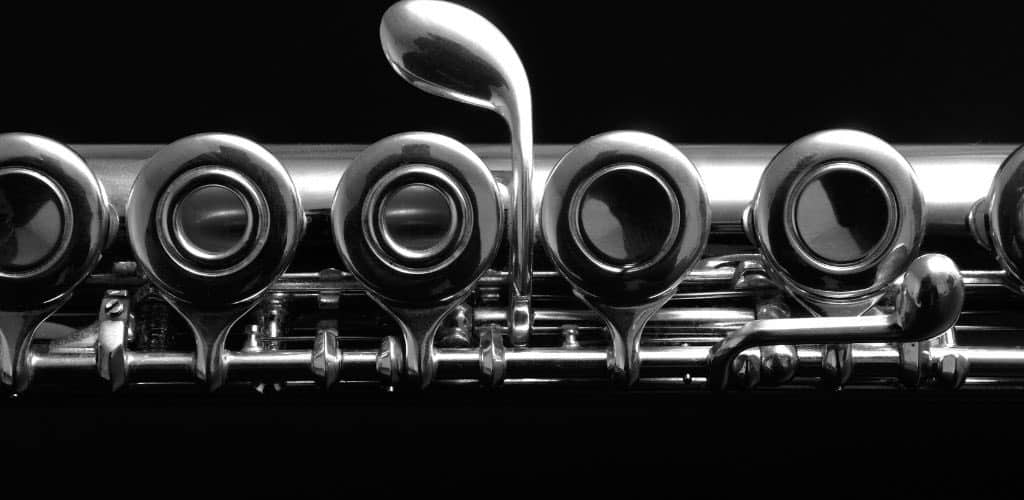







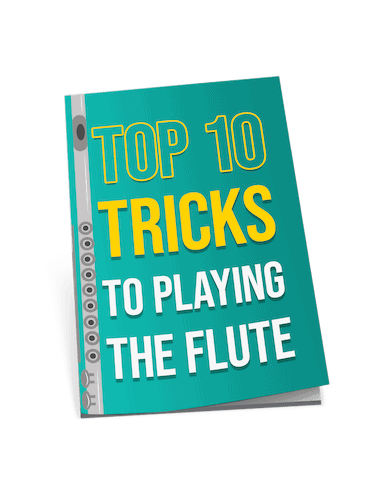
Hey there! I’ve been playing the flute for a couple of years now and I’m really trying to push my skills to the next level. I found the part about advanced techniques and the impact of the foot joint fascinating. How significant is the role of the foot joint in expanding the flute’s range, really? I’ve been thinking about investing in a new flute with a B foot joint, wondering if it will make a big difference in my repertoire. Great article, Robert Emery, it’s super helpful for enthusiasts like me who wanna dive deeper into the nuances of flute playing!
In my experience, a B foot joint can indeed widen your playing range, giving you access to a lower note that’s not available on the standard C foot flute. It may not transform your playing overnight, but it does offer more flexibility for repertoire that requires those deeper tones.
Wow, didn’t know the foot joint had such an impact! Thanks for the info, might consider this for my own flute journey.